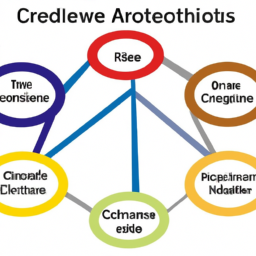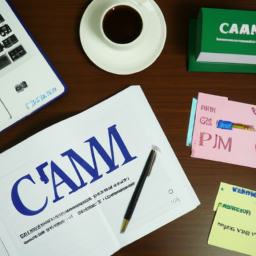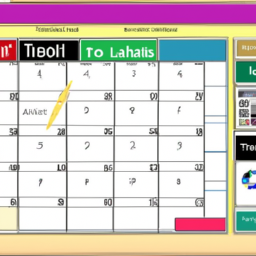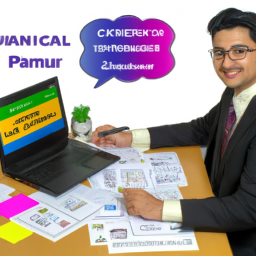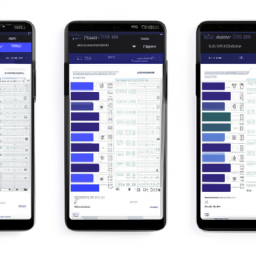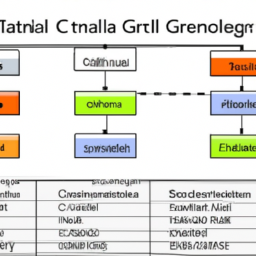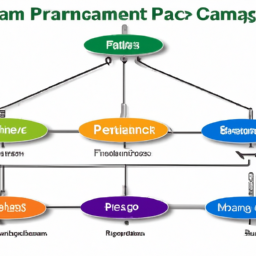Are language barriers hindering the success of your project?
Effective project communication management is crucial for the smooth execution of any endeavor, but when team members speak different languages, it can be a significant challenge. However, with the right strategies in place, you can overcome these obstacles and foster effective communication within your team.
In this article, we will explore how to navigate language barriers and ensure seamless project communication management. By understanding the language needs of your team, utilizing translation tools and services, establishing clear communication guidelines, providing language training and support, using visual aids and non-verbal communication, and fostering a culture of inclusion and respect, you can break down language barriers and enhance collaboration.
Don’t let language differences impede your project’s success – learn how to overcome these challenges and achieve effective project communication management.
Key Takeaways
- Language barriers can hinder project success
- Understanding language needs of the team is important
- Translation tools and services bridge linguistic gaps and improve efficiency
- Foster a culture of inclusion and respect for effective communication and collaboration
Understand the Language Needs of Your Team
Understanding the language needs of your team is crucial in ensuring effective communication and collaboration. By identifying language barriers, you can address them and promote effective communication within your project.
Start by assessing the language proficiency of each team member and understanding their preferred language for communication. This will help you determine if there is a need for translation or interpretation services. It is also important to consider cultural differences that may affect communication.
Encourage team members to express any language-related concerns they may have and provide support to overcome these barriers. By being proactive in understanding and addressing language needs, you can foster a more inclusive and efficient work environment.
Moving forward, it is important to explore the use of translation tools and services to further facilitate communication and collaboration in your project.
Use Translation Tools and Services
Utilizing translation tools and services helps to effectively bridge linguistic gaps in project communication. These tools and services provide a valuable solution for ensuring translation accuracy and facilitating clear understanding among team members who speak different languages.
Here are three key benefits of using translation tools and services:
-
Increased efficiency: With the help of translation tools, communication can be translated quickly and accurately, saving time and ensuring that everyone is on the same page.
-
Cost-effective solutions: By utilizing translation tools and services, organizations can avoid the expenses associated with hiring professional translators or language specialists, making it a cost-effective option.
-
Improved collaboration: Translation tools and services enable seamless collaboration among team members from diverse linguistic backgrounds, promoting better understanding and cooperation.
By using these tools and services, you can overcome language barriers in project communication and establish clear communication guidelines for your team.
Establish Clear Communication Guidelines
When discussing the subtopic of establishing clear communication guidelines, it’s important to set expectations for language use and proficiency.
By clearly defining what level of language proficiency is required, you can ensure that everyone is on the same page and avoid any miscommunications.
Additionally, it’s crucial to encourage open communication and ask for clarification when needed. This can help to foster a collaborative and productive working environment.
Set expectations for language use and proficiency
To effectively manage communication in a project, have you set clear expectations for language use and proficiency? It’s crucial to establish these expectations from the beginning to ensure smooth and effective communication among team members.
Here are three key reasons why setting expectations for language use and proficiency is essential:
-
Improved clarity: When everyone understands the language requirements and proficiency levels, it minimizes misunderstandings and promotes clear communication.
-
Enhanced collaboration: By setting expectations, team members can identify areas where they may need additional language support, fostering collaboration and teamwork.
-
Increased efficiency: When language expectations are clearly defined, it saves time and avoids unnecessary back-and-forth discussions or clarifications.
By setting expectations for language use and proficiency, you create a solid foundation for effective communication. This’ll enable you to encourage open communication and ask for clarification when needed, ensuring that the project progresses smoothly.
Encourage open communication and ask for clarification when needed
Make sure you actively encourage open communication and ask for clarification whenever necessary. This is crucial for effective project communication management, especially when language barriers are present.
Encouraging active listening among team members can help overcome misunderstandings and ensure that everyone is on the same page. It is important to create a safe and inclusive environment where individuals feel comfortable asking for clarification when they don’t fully understand something.
Additionally, promoting cultural awareness can also aid in overcoming language barriers as it helps team members understand and respect different communication styles and norms. By fostering open communication and encouraging clarification, you can lay the foundation for successful project communication management.
Moving forward, the next step is to provide language training and support to further bridge any language gaps.
Provide Language Training and Support
By offering language training and support, teams can bridge the communication gap and unlock the door to a world of seamless collaboration. Language immersion programs can be implemented to immerse team members in the target language, enhancing their understanding and fluency. This allows them to communicate more effectively with their counterparts and reduces the chances of misunderstandings.
Cultural sensitivity training can also be provided to help team members understand different cultural norms and communication styles, fostering empathy and respect. Additionally, providing access to language resources such as translation tools and language dictionaries can aid in overcoming language barriers during project discussions.
By equipping teams with the necessary language training and support, they can communicate more efficiently and cultivate a stronger sense of teamwork. This lays the foundation for the next section on how to use visual aids and non-verbal communication to enhance project communication.
Use Visual Aids and Non-Verbal Communication
Enhance your project collaboration by utilizing visual aids and non-verbal cues to convey ideas and information effectively.
Visual aids, such as charts, diagrams, and presentations, can simplify complex concepts and make them easier to understand for team members who may have limited language proficiency. These aids provide a visual representation of data and help in conveying information accurately.
Additionally, non-verbal cues, like gestures, facial expressions, and body language, play a crucial role in cross-cultural communication. They can help bridge the language gap and convey emotions, intentions, and attitudes.
By using visual aids and non-verbal cues, you can ensure that everyone on your team comprehends the message, regardless of language barriers. This fosters a culture of inclusion and respect, where all team members feel valued and understood.
Foster a Culture of Inclusion and Respect
Cultivating a culture of inclusion and respect involves fostering an environment where all team members feel valued and understood, regardless of their cultural or linguistic backgrounds.
To foster collaboration and address unconscious biases, consider implementing the following strategies:
-
Encourage open dialogue: Create opportunities for team members to share their perspectives and experiences. This can help promote understanding and empathy among team members.
-
Provide diversity training: Offer workshops and training sessions that raise awareness about unconscious biases and provide tools for addressing them. This can help team members recognize and challenge their own biases.
-
Celebrate diversity: Recognize and appreciate the unique contributions of each team member. Encourage team members to share their cultural traditions, languages, and perspectives. This can foster a sense of belonging and create a more inclusive work environment.
By implementing these strategies, you can foster a culture of inclusion and respect, enabling effective communication and collaboration within your project team.
Frequently Asked Questions
How can project managers determine the specific language needs of their team members?
To determine the specific language needs of your team members, start by conducting a needs assessment. Schedule individual meetings to discuss their language proficiency and any areas of improvement.
Additionally, consider using language proficiency tests or surveys to gather information. Once you have determined their needs, provide language training resources such as language courses, workshops, or online tutorials.
Remember the adage "communication is key" and prioritize effective communication to overcome language barriers within your project team.
What are some recommended translation tools and services that can be used to overcome language barriers in project communication?
To overcome language barriers in project communication, there are several recommended translation tools and services available. These tools can help bridge the gap by providing real-time translation, document translation, and even audio and video translation.
Some popular options include Google Translate, Microsoft Translator, and SDL Trados. These tools ensure effective communication and collaboration among team members, regardless of their language proficiency, ultimately enhancing project success.
How can project managers establish effective communication guidelines that address language barriers?
To establish effective communication guidelines that overcome language barriers, project managers must first understand the obstacles they face. By acknowledging the diverse linguistic needs of team members, you can develop guidelines that promote clarity and understanding.
Encourage the use of simple language, visuals, and cultural sensitivity in all project communications. Additionally, provide language training or access to translation resources to ensure everyone can actively participate.
With these guidelines in place, you can foster effective communication and drive project success.
What are some effective methods for providing language training and support to team members who face language barriers?
To provide language training and support to team members facing language barriers, you can utilize various methods.
Language training methods include offering language courses, providing language learning resources, and organizing language exchange programs.
Language support methods involve employing multilingual staff, utilizing translation tools, and encouraging open communication to address any language-related concerns.
These approaches help team members improve their language skills, overcome barriers, and enhance overall project communication.
What are some examples of visual aids and non-verbal communication techniques that can enhance project communication when language barriers exist?
To enhance project communication when language barriers exist, it is important to use visual aids and non-verbal techniques. Visual aids, such as diagrams, charts, and infographics, can help convey information more easily. Non-verbal techniques, like gestures, facial expressions, and body language, can also bridge the gap. By using these methods, you can ensure effective communication even when language may be a challenge. Remember, a picture is worth a thousand words, and actions speak louder than words.
Conclusion
So there you have it, the key to overcoming language barriers in project communication management.
By understanding the language needs of your team, utilizing translation tools and services, establishing clear communication guidelines, providing language training and support, and using visual aids and non-verbal communication, you can foster a culture of inclusion and respect.
Like a bridge that connects different worlds, effective communication can bridge the gap between language differences and bring your team closer together.
So start implementing these strategies today and watch your projects flourish!








